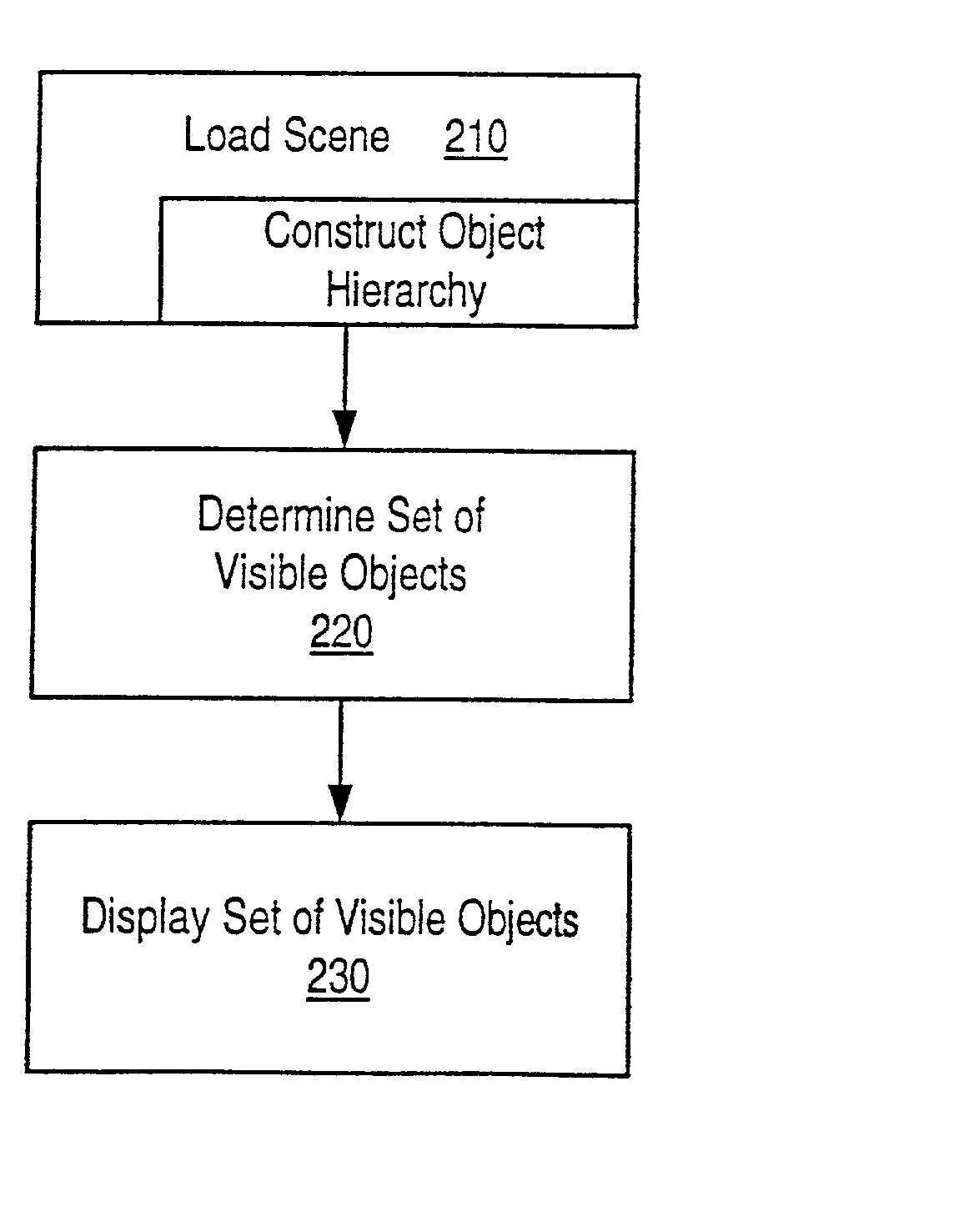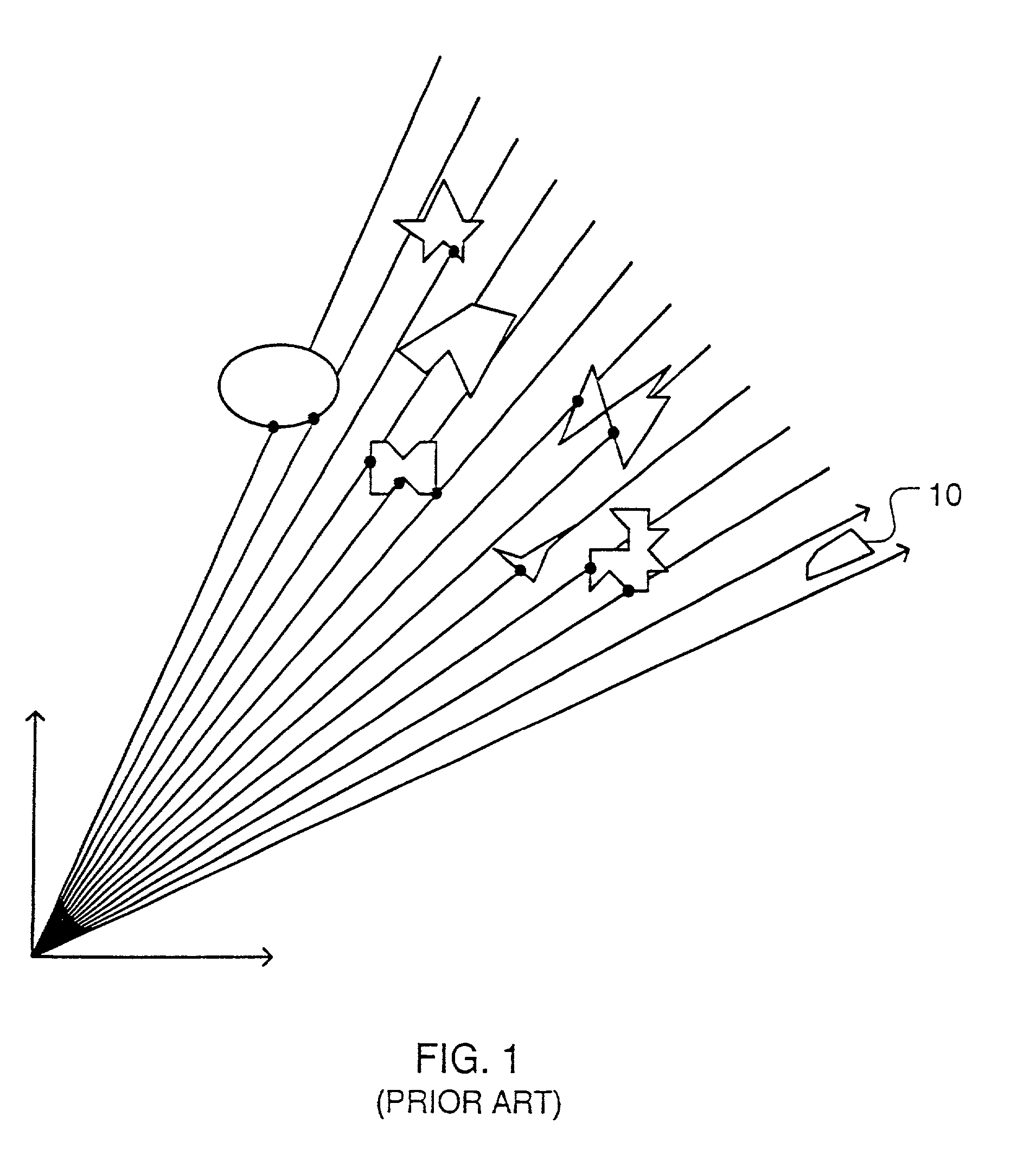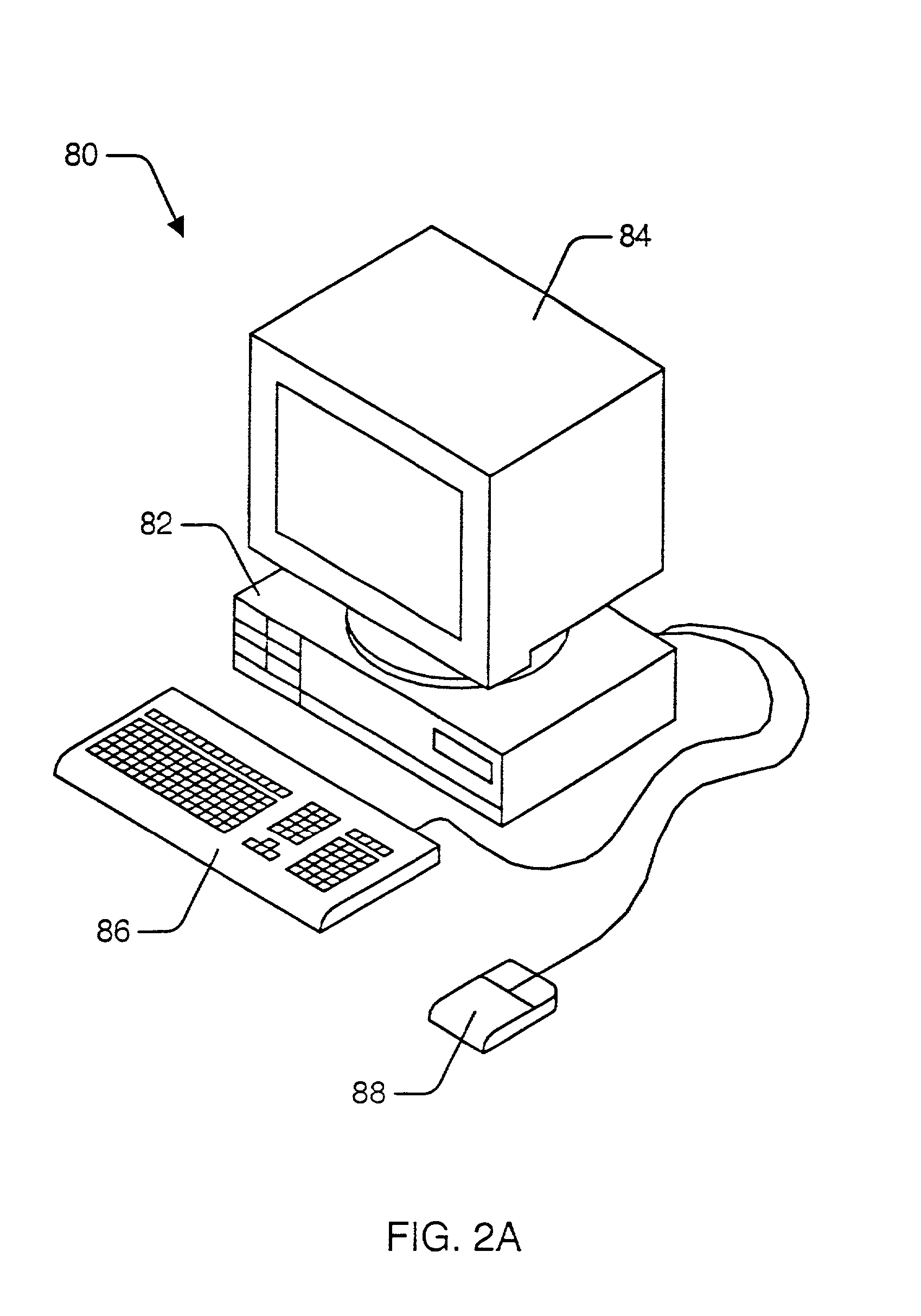Size conditioned visibility search system and method
a visibility search and size-conditioned technology, applied in the field of computer graphics, can solve the problems of sloppy algorithm wasting most of the computational advantage, unable to refine the visibility search of a cone hierarchy to pixel resolution, and the query is more expensive than the query used in the ray casting method, so as to achieve the effect of increasing efficiency
- Summary
- Abstract
- Description
- Claims
- Application Information
AI Technical Summary
Benefits of technology
Problems solved by technology
Method used
Image
Examples
first embodiment
[0076] In a first embodiment, six normal vectors oriented in the three positive and three negative axial directions are used to generate a fixed-direction hierarchy of hulls shaped like rectangular boxes with sides parallel to the coordinate planes. These axis-aligned bounding hulls provide a simple representation that has excellent local computational properties. It is easy to transform or compare two axis-aligned hulls. However, the approximation provided by axis-aligned hulls tends to be rather coarse, often proving costly at more global levels.
second embodiment
[0077] In a second embodiment, eight normal vectors directed towards the corners of a cube are used to generate a hierarchy of eight-sided hulls. For example, the eight vectors (.+-.1, .+-.1, .+-.1) may be used to generate the eight-sided hulls. The octahedron is a special case of this hull family.
third embodiment
[0078] In a third embodiment, fourteen normal vectors, i.e. the six normals which generate the rectangular boxes plus the eight normals which generate the eight-sided boxes, are used to generate a hull hierarchy with fourteen-sided hulls. These fourteen-sided hulls may be described as rectangular boxes with corners shaved off. It is noted that as the number of normal vectors and therefore side increases, the accuracy of the hull's approximation to the underlying object increases.
PUM
 Login to View More
Login to View More Abstract
Description
Claims
Application Information
 Login to View More
Login to View More - R&D
- Intellectual Property
- Life Sciences
- Materials
- Tech Scout
- Unparalleled Data Quality
- Higher Quality Content
- 60% Fewer Hallucinations
Browse by: Latest US Patents, China's latest patents, Technical Efficacy Thesaurus, Application Domain, Technology Topic, Popular Technical Reports.
© 2025 PatSnap. All rights reserved.Legal|Privacy policy|Modern Slavery Act Transparency Statement|Sitemap|About US| Contact US: help@patsnap.com



